Cash
Through a current account
Electronic card (Visa, Master, Dina, etc.)
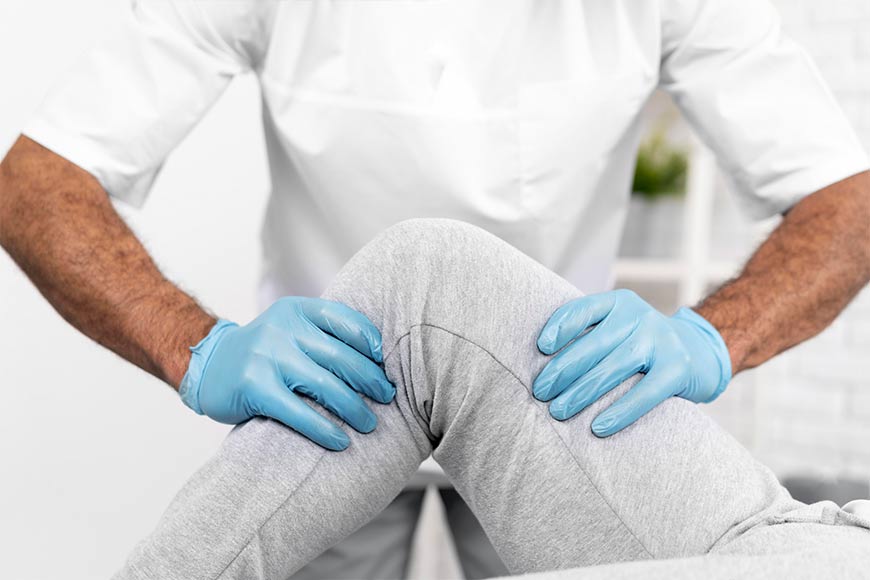
Fokus Fizical 100% guarantees fast and effective healing
Super DISCOUNT! 20% on all therapies in Oktober!
Do not treat yourself over the Internet! Make an appointment via Viber now!
The meniscus is a structure in the knee that acts as a cushion between the femur (thigh bone) and the tibia (shin bone). It is made up of cartilage that helps absorb shock and stabilize the knee. The meniscus can become damaged due to injury, repetitive strain, or aging, which can lead to pain, stiffness, and decreased mobility. A meniscus tear is a common injury, especially in athletes and people who do physical work.
Treatment for a meniscus tear depends on the type of injury, its severity, and the patient’s overall health. Treatment can range from conservative methods, such as physical therapy and ice, to surgical interventions, such as arthroscopic surgery.
Meniscus damage can cause a variety of symptoms, and the intensity of the pain depends on the severity of the injury. While some people may have a meniscus injury without any significant symptoms, others may experience severe pain, difficulty moving, and stiffness in their knee. The most common symptoms that indicate a meniscus injury include:
Damage to the meniscus can occur due to various causes, and this condition is a very common injury that affects the functionality of the knee and quality of life. The meniscus is a cartilaginous structure that acts as a cushion between the femur (thigh bone) and the tibia (shin bone), helping to absorb shock and stabilize the joint. Due to its crucial role, damage to the meniscus can seriously interfere with mobility and cause pain and discomfort. Damage to the meniscus is usually associated with injury, aging or excessive exertion, and these factors can affect its function in different ways.
Treatment for a torn meniscus depends on the type of injury and its severity. In most cases, treatment can involve conservative methods, but in more severe cases, when the damage is severe, surgery is necessary. Here are some approaches to treating a torn meniscus:
Conservative treatment:
Physical therapy: Physical therapists use specialized exercise techniques to help strengthen the muscles of the knee, improve mobility, and reduce pain. Therapy may focus on improving flexibility and stability of the joint.
Surgical Treatment:
If conservative treatment does not provide relief or if the meniscus damage is severe, surgery may be necessary. Common options include:
While some injuries cannot be completely prevented, there are ways to reduce the risk of meniscus damage:
Treating a meniscus tear requires a timely approach, from proper diagnosis to appropriate therapy. If you experience knee pain, swelling, or difficulty moving, it is important to seek professional help to avoid more serious complications. Our experts use the latest techniques to help you recover quickly and return to daily activities. Our team works with you to provide effective treatment and long-term injury prevention.
How do I know if I have a torn meniscus?
A meniscus injury usually causes knee pain, difficulty moving, a feeling of locking, and stiffness. The pain may be worse when bending, twisting, or during sports activities. If you notice swelling or difficulty straightening your knee, this may indicate a meniscus injury.
Is it possible to heal a meniscus injury without surgery?
Many meniscus injuries can be treated conservatively, such as rest, ice, physical therapy, and pain medication. If symptoms are mild, nonsurgical treatment may be effective. However, in more severe cases, surgery may be necessary to repair or remove the damaged portion of the meniscus.
What are the treatment options for a meniscus injury?
Treatment for a meniscus injury can be conservative, including rest, ice, medication, and physical therapy, or surgical. Arthroscopic surgery is often the option, using a small camera and instruments to repair or remove the damaged meniscus. In more severe cases, a meniscus transplant may be necessary.
How long does recovery from a meniscus injury take?
The duration of recovery depends on the severity of the injury. If treatment is conservative, recovery can take several weeks to several months. After surgery, recovery can take 4 to 6 months, with physical therapy and a gradual return to activity.
Can a meniscus injury cause permanent damage?
If a meniscus injury is not treated in time, it can lead to permanent damage to the cartilage in the knee, which increases the risk of arthritis. Timely treatment, whether conservative or surgical, can significantly reduce the risk of long-term knee problems.
How can I prevent a meniscus injury?
Prevention of meniscus injury includes strengthening the muscles around the knee, using proper exercise and sports techniques, maintaining a healthy weight, and avoiding sudden rotations or excessive stress on the knee. Regular stretching and wearing appropriate footwear can also help reduce the risk of injury.
Cash
Through a current account
Electronic card (Visa, Master, Dina, etc.)
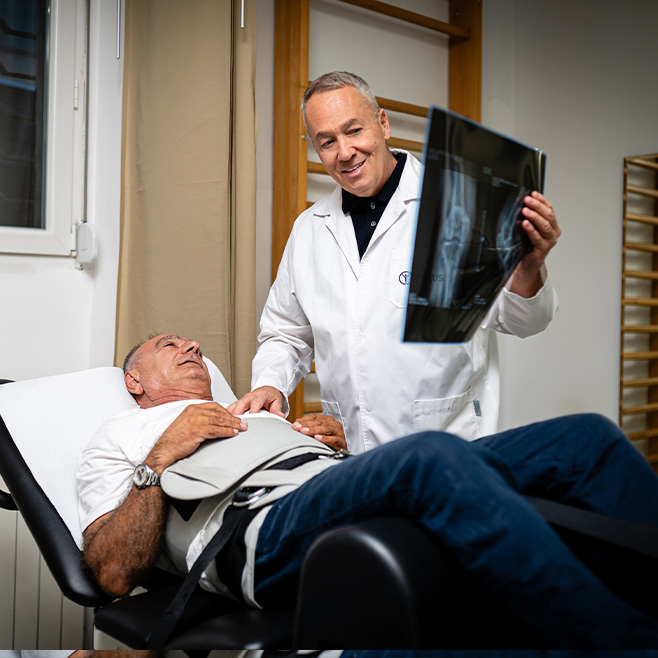
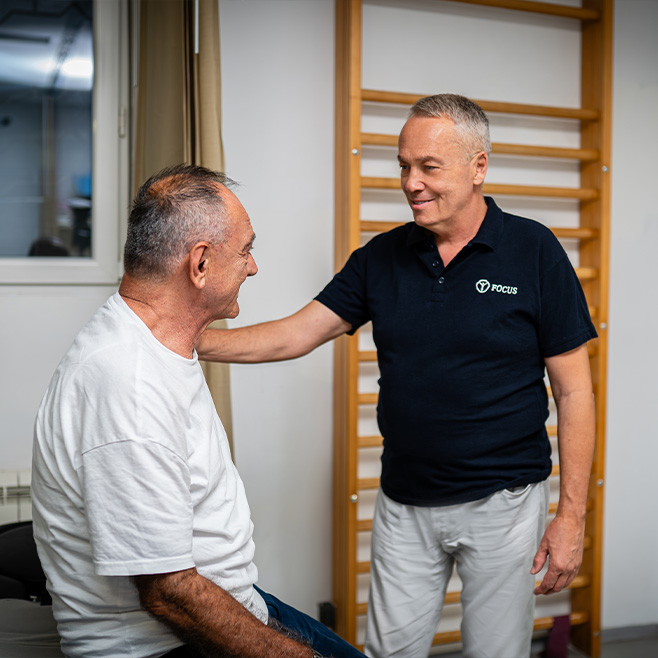
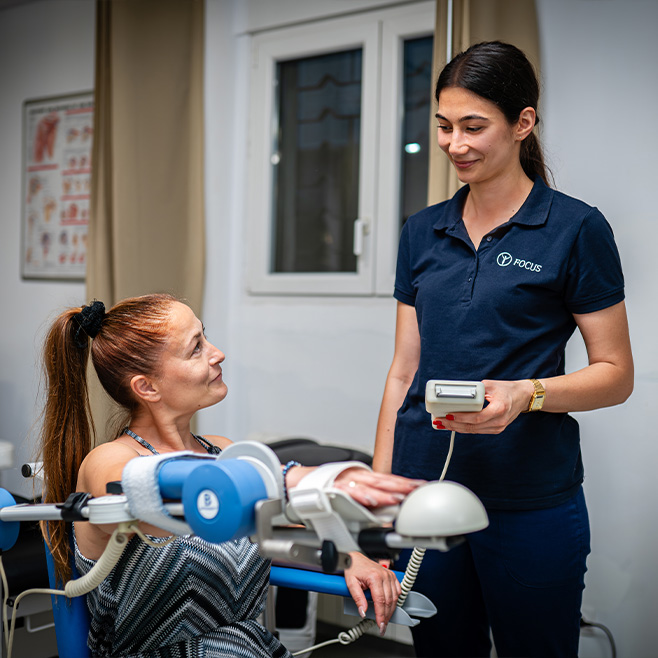
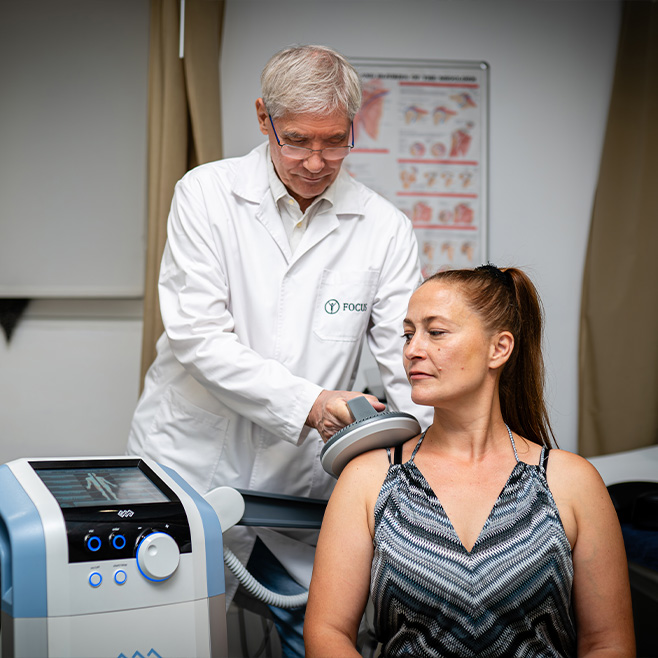
See the experiences of our satisfied patients who successfully recovered with the help of our physical therapy. Get acquainted with the testimonies of patients who faced various joint injuries, sports knee injuries, back injuries and similar problems, which we quickly, efficiently and successfully treated.
Aesthetic surgery
Focus Fizikal is a leading private clinic for physical therapy in Belgrade. For more than 10 years, we have been providing high-quality services that enable quick recovery and healing of our patients.

For all our current and future patients, we have made it possible to schedule an appointment online.